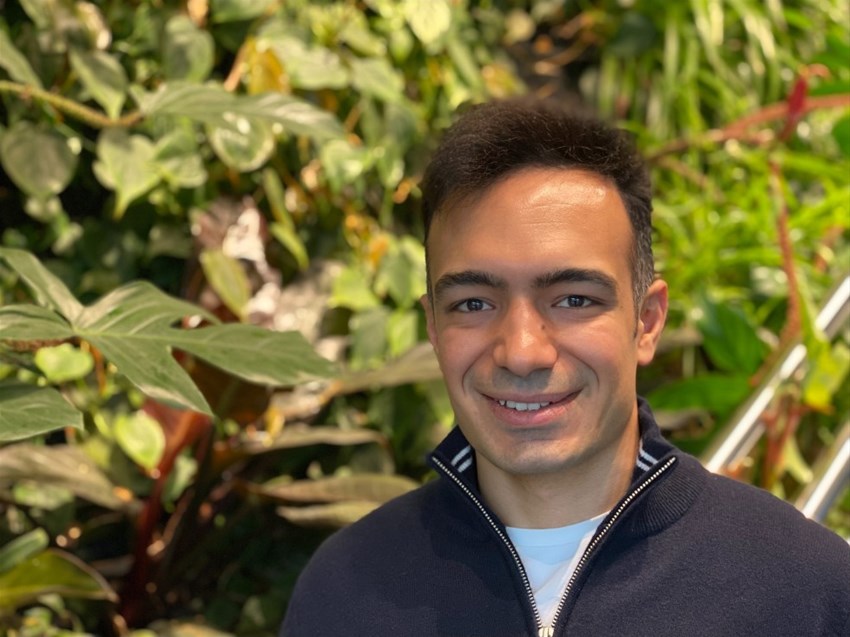How to optimize welding and additive manufacturing with duplex stainless steel
22 Apr 2024
Fresh research from University West demonstrates how the popular material, duplex stainless steel, can be successfully utilized in laser welding and additive manufacturing. Amir Baghdadchi’s doctoral thesis paves the way for more industries to shift from conventional production methods to more sustainable manufacturing techniques.

Amir Baghdadchi's research shows new possibilities for using duplex stainless steel in additive manufacturing and laser welding. Photo: University West.
Additive manufacturing is considered a crucial part of the next generation of industrial production, where demands for sustainability are high. To utilize additive manufacturing for duplex stainless steels, it is necessary to develop and adapt the technology to the material. Amir Baghdadchi has dedicated his doctoral studies to developing knowledge on how duplex stainless steel can be optimally used for both laser welding and additive manufacturing using directed energy deposition technique.
“Duplex stainless steel are used in a variety of applications thanks to their high corrosion resistance and mechanical properties. However, efficient and successful production and joining of DSS require precise control of processes and an in-depth understanding of the relations between composition, processing thermal cycles, resulting microstructures and properties.”, explains Amir.
New methodologies
During the first year as a Ph.D. candidate, Amir focused on laser welding of duplex stainless steel. By experimenting with different shielding gases and laser heating techniques, he identified several ways to improve weld joints. He has also developed a new EBSD (Electron back scatter diffraction) methodology* that enables the phase fraction analysis of multiphase materials. The methodology can also be used for additively manufactured materials as well as base and weld metals.
Amir's research, however, has mainly focused on developing knowledge on Directed Energy Deposition using Laser Beam and wire (DED-LB/w), also called laser metal deposition with wire (LMDw), of duplex stainless steel. Together with other researchers, he developed a systematic four-stage methodology, and then additive manufacturing was used to fabricate a cylinder in duplex stainless steel. Subsequently, the cylinders microstructure, mechanical properties, and corrosion resistance were analyzed using, a wide range of techniques like optical microscopy, electron microscopy, mechanical testing and electrochemical pitting corrosion testing.
Satisfied with the results
“The development of the EBSD methodology is one of the most interesting results of my research. The methodology provides a robust framework for phase fraction analysis of additively manufactured and welded components. It enables further advancements in material science and manufacturing technology”, says Amir.
“Additionally, the systematic four-stage methodology can contribute to the easier and more cost-effective development of scalable fabrication methods for additively manufacturing of metal components with better mechanical properties and corrosion resistance”.
Significant advantages with additive manufacturing
The benefits and opportunities of additive manufacturing are significant and numerous. It provides new opportunities to fabricate near-net-shape components with a low waste of material, customized features, tailored properties, and complex geometries.
“Moreover, additive manufacturing provides the opportunity to manufacture the component just after its designing with computer aid design (CAD). In my PhD study, a cylinder was produced with AM in a short time. However, design and fabrication of casting and forging molds for its conventional manufacturing needs several times.”
“Additionally, additive manufacturing provides new opportunities to create lighter components with more complex geometries. Altogether, these factors can contribute to a more sustainable production.”
For Amir, the career continues at ESAB in Gothenburg, where his expertise in materials science will be valuable in the development of welding materials for various metallic materials, with the aim of increasing welding efficiency and performance across various industrial sectors.
*EBSD: Electron Backscatter Diffraction
Read more about Amir Baghdadchi's research in the doctoral thesis:
“Directed Energy Deposition Additive Manufacturing and Welding of Duplex Stainless Steel using Laser Beam”
Contact: Amir Baghdadchi, Doctor of Production Technology, e-mail: amir.baghdadchi@esab.se,
Phone: +46 76 554 2736


